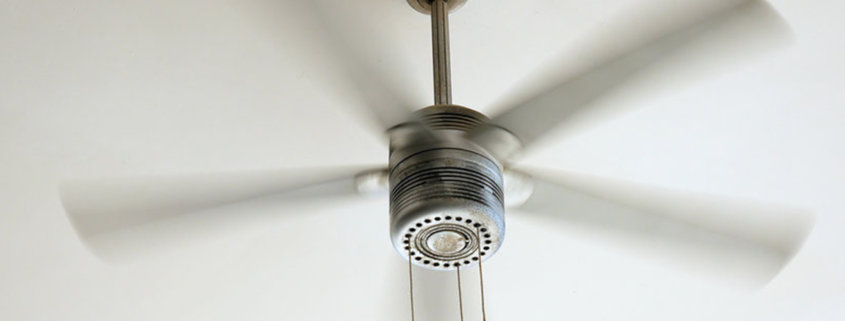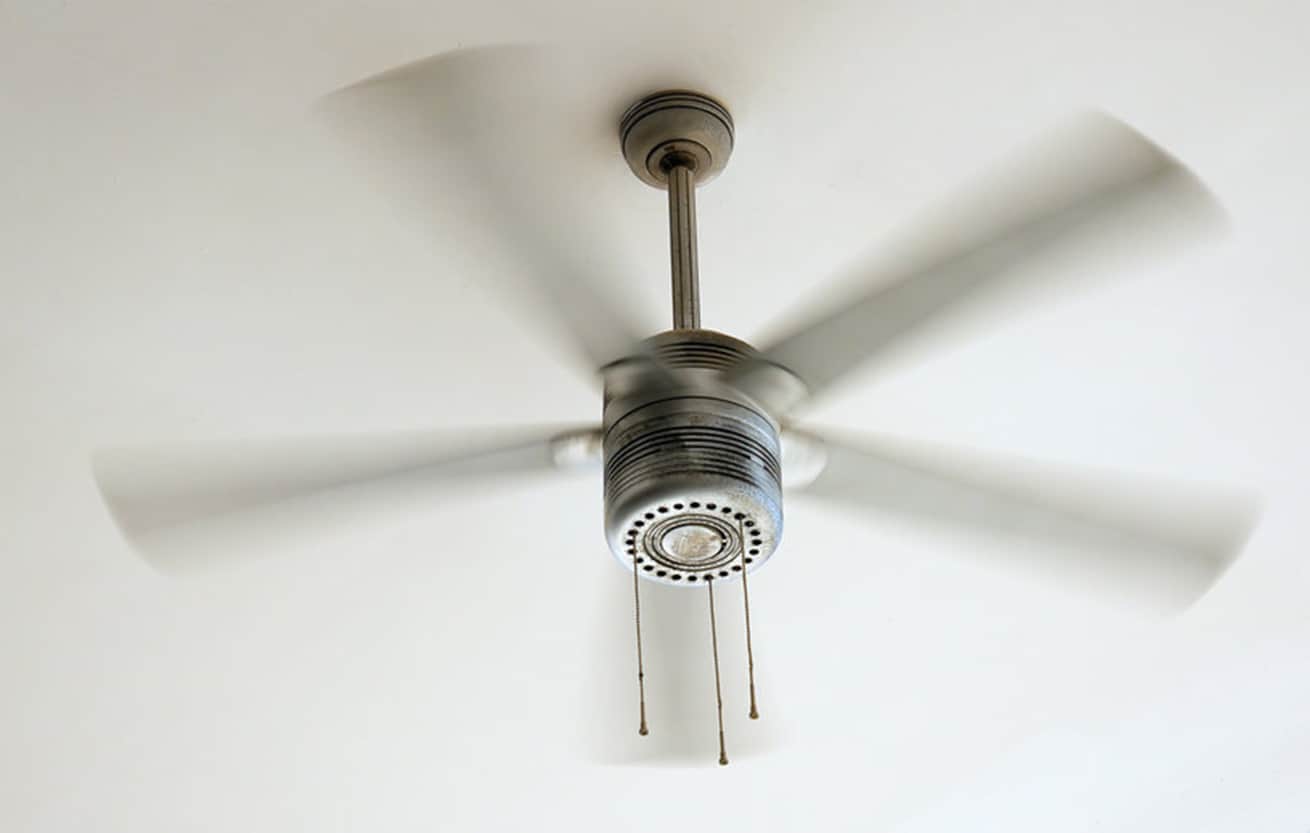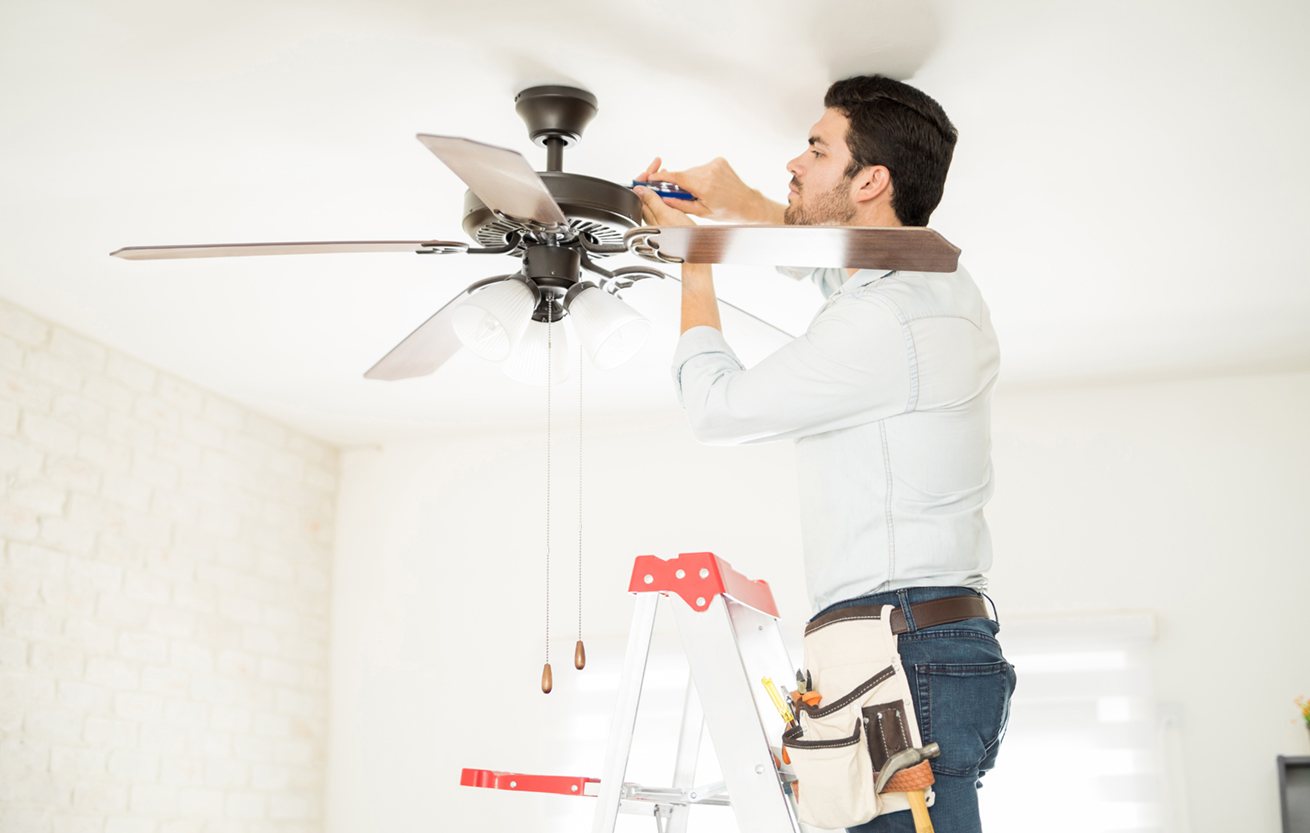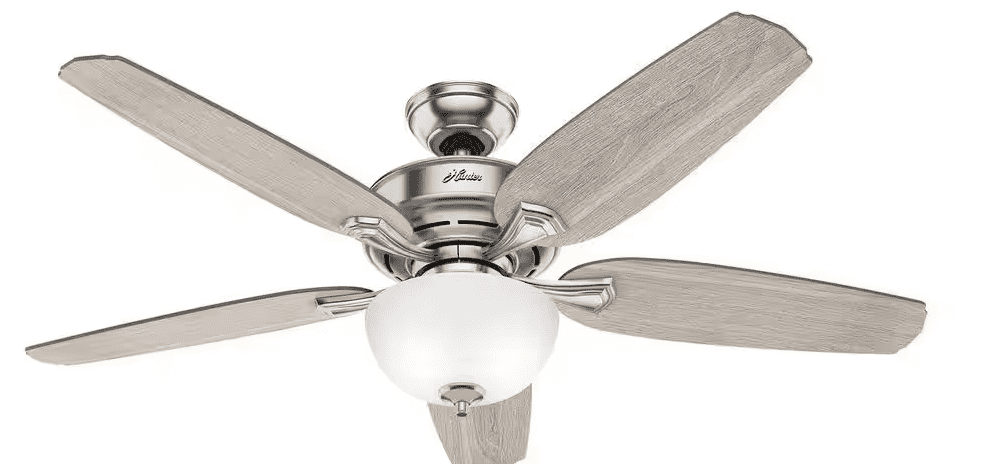SOLVED! The Mystery of Ceiling Fan Direction Plus Best Inexpensive Ceiling Fan
Years ago, a reader sent in her handy tip, passed along from her husband, a heating and air conditioning specialist: In the winter, make your ceiling fans spin counterclockwise. Or was that clockwise? To be honest, it totally slipped my mind as soon as I shared it with my readers.
But I do recall the barrage of responses I received. Some thanked me for printing the correct answer to the burning question, while others told me I was wrong and it should spin in the opposite direction. But why?! Who makes up these rules? Does anyone know for certain?
Today, I have the answers.
The science
To make this easy, first, we need to understand the principle behind moving air. You may be familiar with the terms “wind chill” and “heat index.” These terms indicate what the temperature feels like, not what it is in reality on the thermometer.
Ceiling fans cannot reduce the temperature inside your home in the summer. Ceiling fans cannot cool the room! But they can certainly make you feel as if that is the case. Ditto for making you feel warmer in the winter. A ceiling fan that is set properly can make you feel as if the temperature is either cooler or warmer.
Knowing how to use fans in summer to send a rush of air downward, cooling your skin and making it feel up to eight degrees cooler than it is, lowers the chill factor.
Knowing how to use fans to circulate the hot air in winter is equally important because you will be able to increase your body’s heat index or how warm you feel, while creating less actual heat and keeping the heating bills down.
Forward or reverse?!
The direction in which a ceiling fan should spin in the summer and in the winter depends on the type of fan you have and at which angle the fan blades have been set by the manufacturer (or you, if you have altered them). Even so, this is not difficult.
In fact, once you know a simple trick and way to test how your ceiling fan is designed, ceiling fan direction will cease being a mystery.
First, look to see if there is a switch marked “Forward” and “Reverse.” If so, and you are sure the blades are angled properly, typically (but not in all cases) you want the fan to spin Forward during the summer and Reverse in the winter.
If set on Forward the fan blows air downward onto the occupants of the room, it makes them feel cooler by increasing the evaporative cooling on our skin. Most people know sweating is a process your body uses to cool down. Your body is always trying to maintain an even body temperature. Sweating reduces body heat through evaporative cooling.
During the winter, you do not want the fan to blow directly on you, which would increase your wind chill factor and make you feel even cooler than the thermostat is set to. You want to set the fan to “Reverse” so that it blows air upward to the ceiling, forcing the hot air trapped up there to come down to warm the occupants of the room. And you want to set it on a slow speed to make sure you are not creating a draft.
Is Forward clockwise or counterclockwise?
There is no definitive answer because it depends on your specific fan, where it was manufactured, and the angle at which the blades are set. There are no universal laws regulating ceiling fan manufacturers!
The solution
Are you all mixed up now? Not to worry. Here’s a super easy way to remember which way to set a ceiling fan for the season.
Step 1
Set the fan to High so it is spinning at its top speed, and stand under it. Do you feel the air blowing down on you? Then that is your “Forward” odirection and the setting you want for summer. Make a note. Set it on High speed for the greatest cooling impact.
Step 2
Now switch the fan to go in the other direction. If you do not feel air blowing down on you, that means it’s blowing upward. That is your “Reverse” or winter direction. This is the direction you want for winter. To use the ceiling fan in Reverse, set it on Slow speed to make sure you are pulling the warm air down from the ceiling and into the room, but not creating a draft.
Let’s recap …
Ceiling fans are good at following orders. But you must give them good instructions:
- the correct ceiling fan direction
- the right speed
- turn it on when you’re in the room
- turn the fan off when you leave because you’re wasting electricity when no one is in the rooms to feel cooled—or warmed, depending on the season.
Be diligent to make sure your ceiling fan is working for you, and you could save 15% to 40% on your summer air conditioning costs and reduce next winter’s heating bills, too.
Best Inexpensive Ceiling Fan
We have five Hunter ceiling fans in our home—3 indoors and 2 outdoors. These fans are spectacular. They run silently, almost continuously, year-round. They don’t wobble at all!
Available in a number of finishes. Hunter offers many style choices. Some come with lights, others with remote control. All things considered, Hunter Ceiling Fans are Team EC’s pick for overall Best Inexpensive.
EverydayCheapskate is reader-supported. We participate in the Amazon Services LLC Associates Program, an affiliate advertising program designed to provide a means for publishers to earn fees by linking to Amazon.com and other affiliated sites. Thanks!



















Your expertise is invaluable for those of us looking to optimize comfort and energy efficiency in our homes. Your thorough research and helpful recommendations are greatly appreciated. Here’s to cooler, more cost-effective days ahead!
We moved into our “chimney” townhouse in 1997 and went right out and bought a ceiling fan for the upstairs landing. Air goes down in summer and up in winter. We still have the same fan today. Sears 39.99 plus tax, gosh I miss that store! ( no longer in Canada)
I am from Louisiana and must have ceiling fans on in almost every room (the dining room and the kitchen are exempt) all the time. Drives my not-from-Louisiana-husband crazy. Two fans are from Minke or you could say satan. They cost more and run opposite of every other fan in my life for summer & winter use. The rest are from WAC. The advantage of these are they are completely silent, they are DC, not AC/DC. They are not expensive at all. It’s especially great to have a remote so you don’t have to stand on your beds or chairs to move the little button.
In your recap, you forgot to say clean your fans before you change direction. Otherwise, dust bunnies go everywhere.
I could hug you! The clockwise/counterclockwise instructions that I could find as to which direction to have the blades on a ceiling fan turning for cold/warm weather had me wanting to pull my hair out by the roots while I screamed my frustration to an, obviously, uncaring universe. Every site offered the same, singularly unhelpful instructions. Grrrrr! Thank you so much for solving the mystery of the turn of the blades!
My heat comes from the ceiling and I have fans. Which way would I go with the fan.
You need to stand under the fan to test the direction according to which way it spins so that you feel air coming down. Not all fans are manufactured in the same way. Reread the post for more details.
The best thing we did in our new house is get WAC fans from Lowes. It’s DC, not AC/DC and totally silent. And the remotes can switch the fan from summer to winter instead of getting out a stepladder and all that hassle. The speed is very adjustable, not just high med low. They are not expensive. I drive my husband batty with my need for ceiling fans and these are the wonderful.
Exception to the rule… our church has a very high ceiling in the sanctuary, like 2 storeys high, so in the winter we were paying a lot of money to heat the space under the rafters while the congregation froze. So we set our fans to push the warm are back towards the floor and people very gently so there’s no draft. Made a tremendous difference to our heating bill and congregational comfort. The engineers told us that running the fans in the summer doesn’t make it any cooler because they are too far away. But we’ve learned that people FEEL cooler when they can see the fans turning, so we run them all summer as well. I don’t know whether we bother to change the direction of the fans.
This would be a very remote comparison, Pat. Not many of us have two story ceilings!
I’m trying to wrap my brain around all these fan dynamics!
Question: So basically you only want the fan to be on in the room you are occupying at the moment. Is this correct? – that since the fan doesn’t really change the temperature of the room, turning fans off in unoccupied rooms has no bearing on how the thermostat is set? Right? In other words, the thermostat remains at the same settingeven while fans are turned off and on as needed??
You got it. Yes.
You are 99% correct, Let’s say you’re sitting in the room on a warm summer day, with the ceiling fan set to blow air downward, on you. Within seconds you begin to feel cool—too cool! You can move the thermostat UP a degree or two. Now you feel comfortably cool. So being aware and allowing you HVAC a bit of a rest by adjusting the thermostat in that way is the way that ceiling fans can cut your cooling (heating) bills.
Any suggestions for ceiling fans that don’t have the switch?
I’ve never seen a ceiling one without a much-needed switch. My suggestoin is not to buy such a ceiling fan as it will be counter productive during half the year.